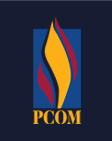Pediatric Arytenoid Dislocation: Diagnosis and Treatment.
Document Type
Article
Publication Date
1-1-2014
Abstract
Arytenoid dislocation and subluxation are well-described injuries in adults but are poorly documented in children. The most commonly cited etiology is intubation trauma although external blunt trauma also is recognized. Symptoms include dysphonia, vocal fatigue, loss of vocal control, breathiness, odynophagia, dysphagia, dyspnea, and cough. Prompt diagnosis and treatment lead to the best chance for recovery, and delayed treatment is likely to result in scarring and possibly ankylosis. The mean age of our study group was 12.3 years and consisted of six males (55%) and five females (45%). The most commonly presenting symptom was hoarseness (81.8%). Six of the 11 patients underwent surgical correction of the dislocated arytenoid cartilage. Four patients refused any treatment and one patient received voice therapy alone. Two patients who refused surgical intervention had spontaneous reduction of their dislocations. After surgical intervention, one patient regained normal voice, four patients had substantial voice improvement without return to preinjury vocal function, and one patient had only slight voice improvement. Pediatric symptoms are similar to these in adults, yet these may be less noticeable to the patient and clinician. A high index of suspicion is needed to diagnose and treat pediatric arytenoid dislocation.
Publication Title
Journal of Voice
Volume
28
Issue
1
First Page
115
Last Page
122
PubMed ID
24119642
Recommended Citation
Mallon, Andrew S.; Portnoy, Joel E.; Landrum, Tré; and Sataloff, Robert T., "Pediatric Arytenoid Dislocation: Diagnosis and Treatment." (2014). PCOM Scholarly Works. 242.
https://digitalcommons.pcom.edu/scholarly_papers/242

Comments
This article was published in Journal of Voice, Volume 28, Issue 1, January 2014, Pages 115-122.
The published version is available at http://dx.doi.org/ 10.1016/j.jvoice.2013.08.016
Copyright © 2014 The Voice Foundation and the International Association of Phonosurgery